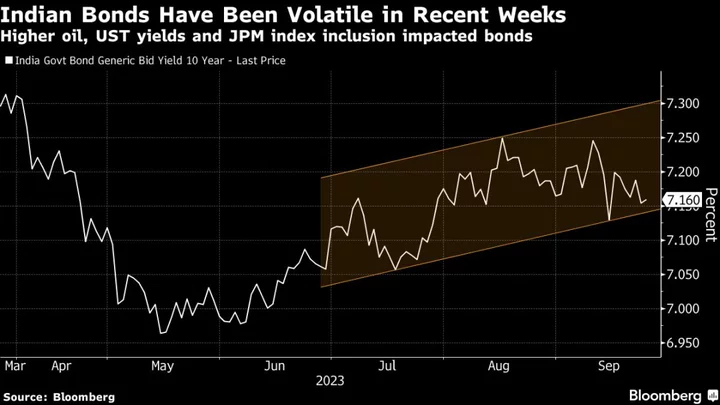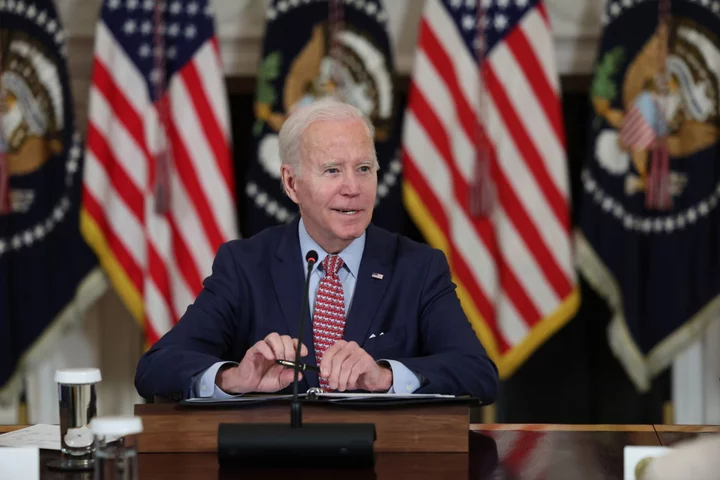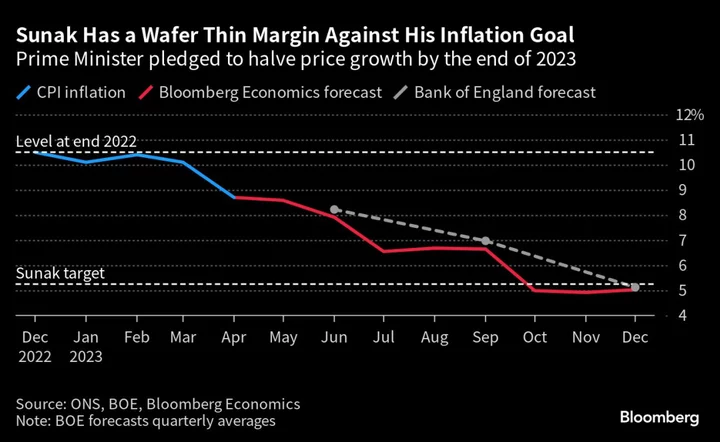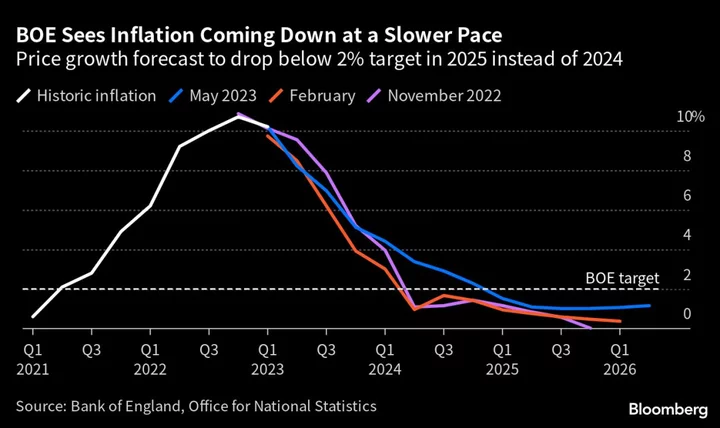India’s government maintained its borrowing plan for the remainder of this fiscal year, as higher revenues obviate the need to raise more funds from the market. Bonds were slightly lower.
Prime Minister Narendra Modi’s administration will sell 6.55 trillion rupees ($78.7 billion) of bonds in the October-February period, the Reserve Bank of India said in a statement late Tuesday. That’s in line with expectations and part of the record 15.43 trillion rupees full-year target.
The decision comes after JPMorgan Chase & Co. last week announced adding Indian government bonds to its flagship emerging market gauge, a step that’s expected to trigger a wave of foreign inflows. The move to keep borrowings unchanged may bring relief to some traders who were looking for signs of additional sales amid expectations the government may loosen purse strings ahead of next year’s federal elections.
Bond markets are likely to remain supported amid lower net supply, higher demand by long-term domestic investors and optimism stemming from index inclusion, according to Kotak Institutional Equities. “Given the busy election cycle, the risk of fiscal slippage may weigh on bonds, though we do not expect any increase in the market borrowing, for now.”
Bonds were slightly lower at open on Wednesday amid higher US yields and crude prices, with the yield on benchmark 10-year bond rising by one basis point to 7.15%.
The government also announced selling a new 50-year tenor bond in response to market demand for ultra-long duration securities, the RBI said. India will sell 200 billion rupees of green bonds in four tranches in tenors of 5-, 10- and 30-years.
Rising revenues may have helped the government to keep borrowings in check. India’s gross direct tax collections rose to 9.87 trillion rupees between April 1 and Sept. 16, 18% higher than a year ago, according to the nation’s finance ministry. Collections from small saving plans are up about 46% in the fiscal year till July, according to ICICI Securities Primary Dealership.
“On the savings scheme front the government is getting a good amount of collection, whatever may be the deficit they can cover on the small savings side,” said Murthy Nagarajan, head of fixed income at Tata Asset Management.
Indian bonds have been relatively less volatile compared to their US counterparts as news of the index inclusion helped offset the impact of higher crude oil prices and US yields. Benchmark 10-year yields are down about 20 basis points in India this year, compared to more than 60 basis points increase in US Treasury yields.
Any gains in the bond market are likely to be limited given higher long-end supply, risks from higher US Treasury yields and oil prices, according Kotak Institutional. The yield curve will have a flattening bias with the 10-year yield in 7.1%-7.25% range in near term, it added.
Here’s a break up of second-half borrowings:
India will sell 3.12 trillion rupees of treasury-bills in the Oct.-Dec. quarter, the RBI said in a separate statement. The government’s short-term borrowing limit has been set at 500 billion rupees for the fiscal second half, RBI said.
--With assistance from Subhadip Sircar.
(Updates with comment in the fourth paragraph, market reaction in fifth)









